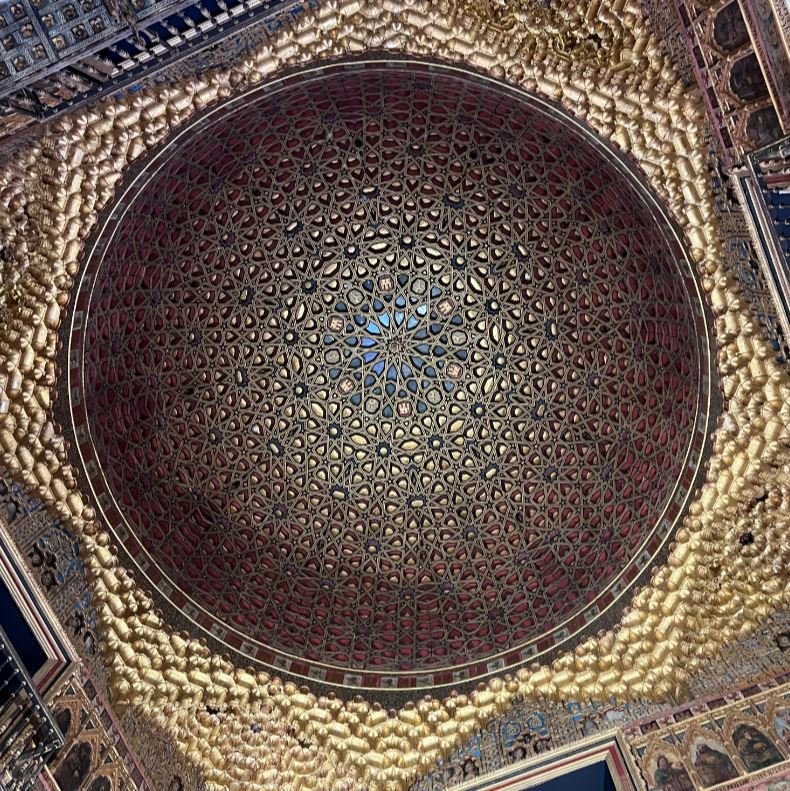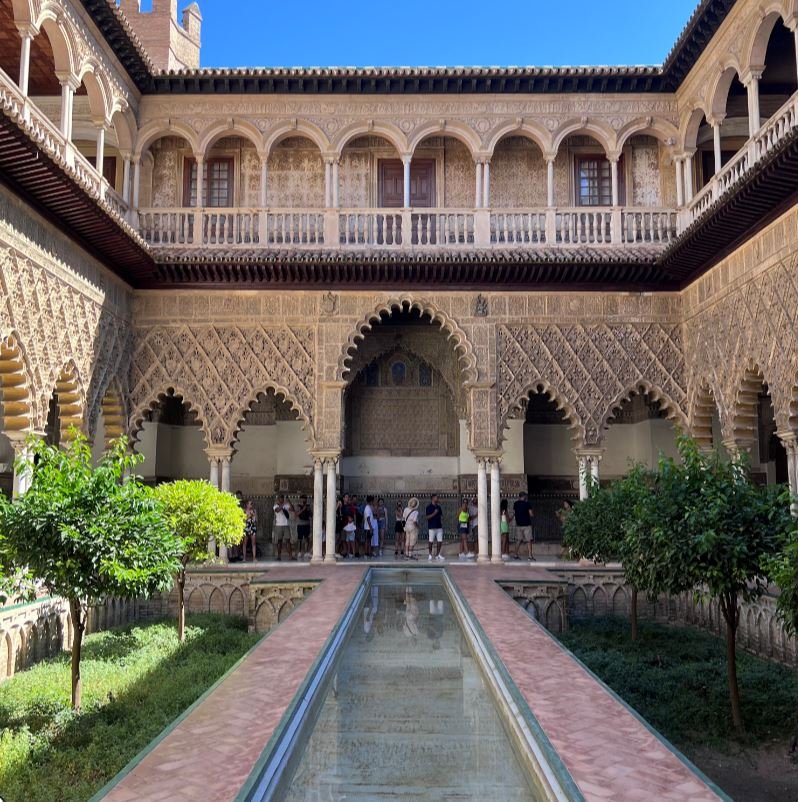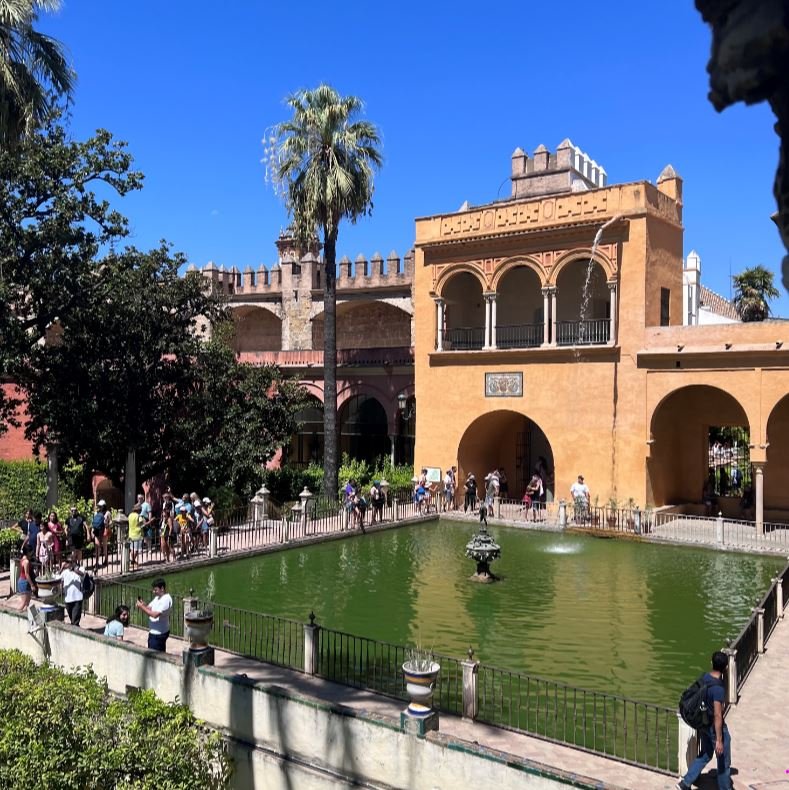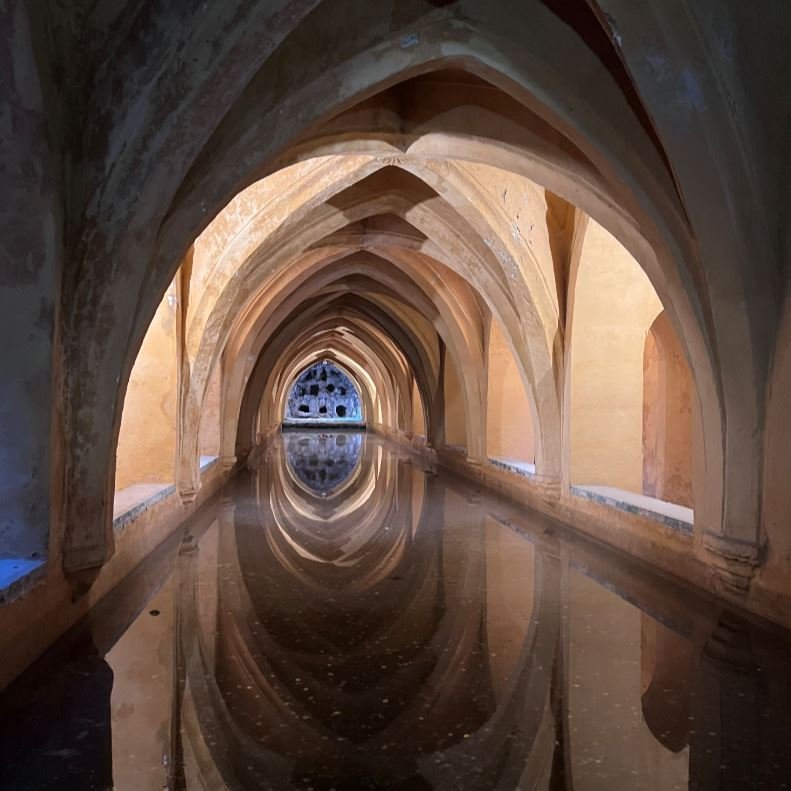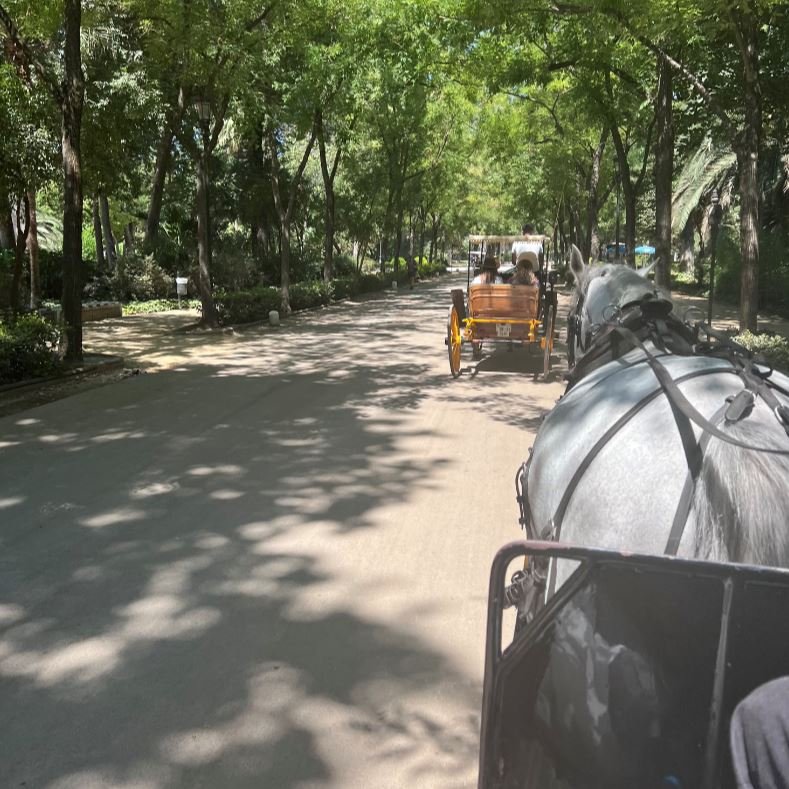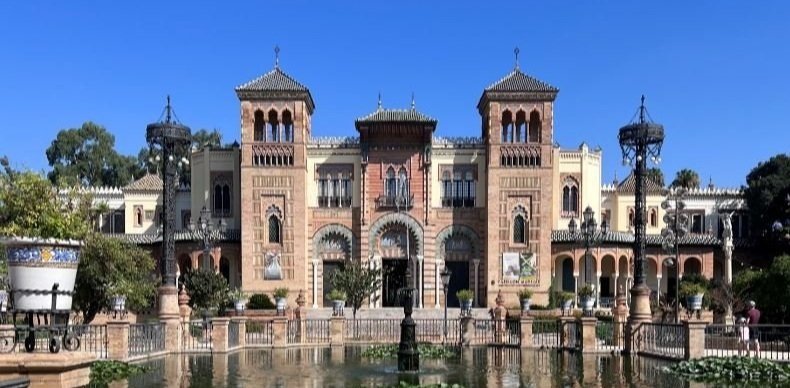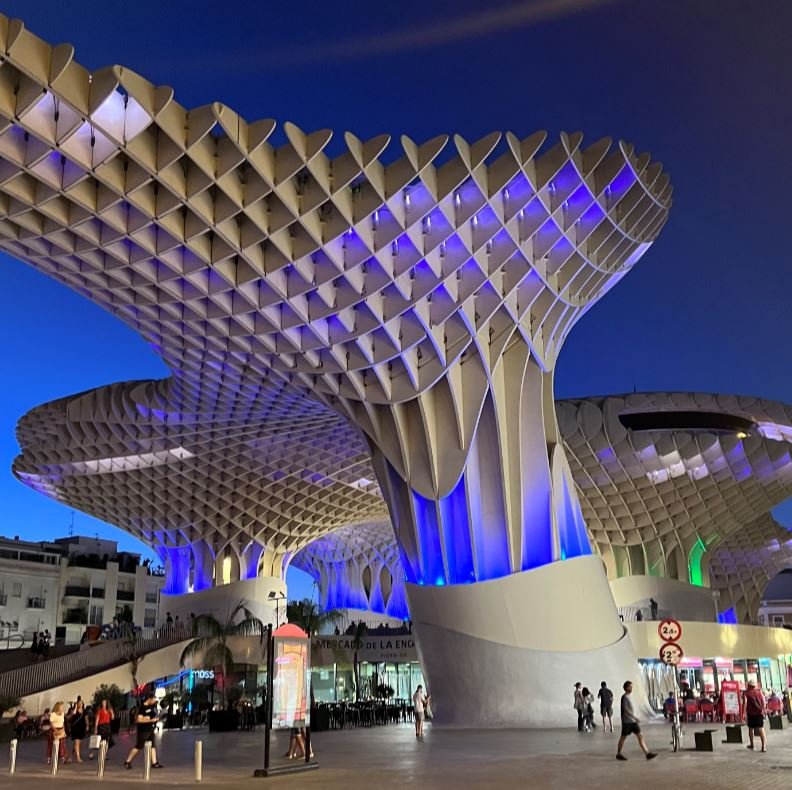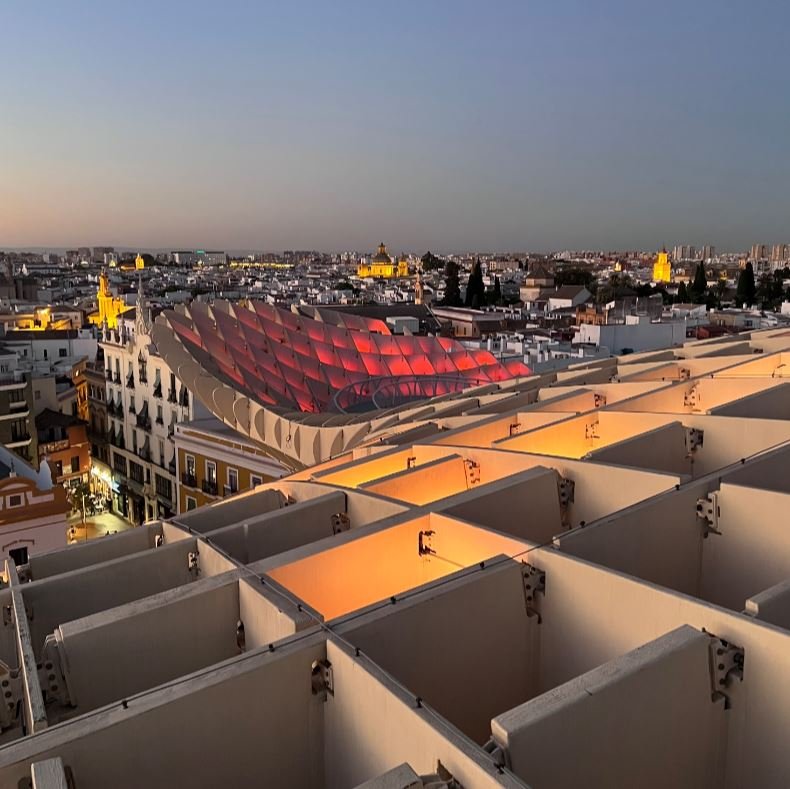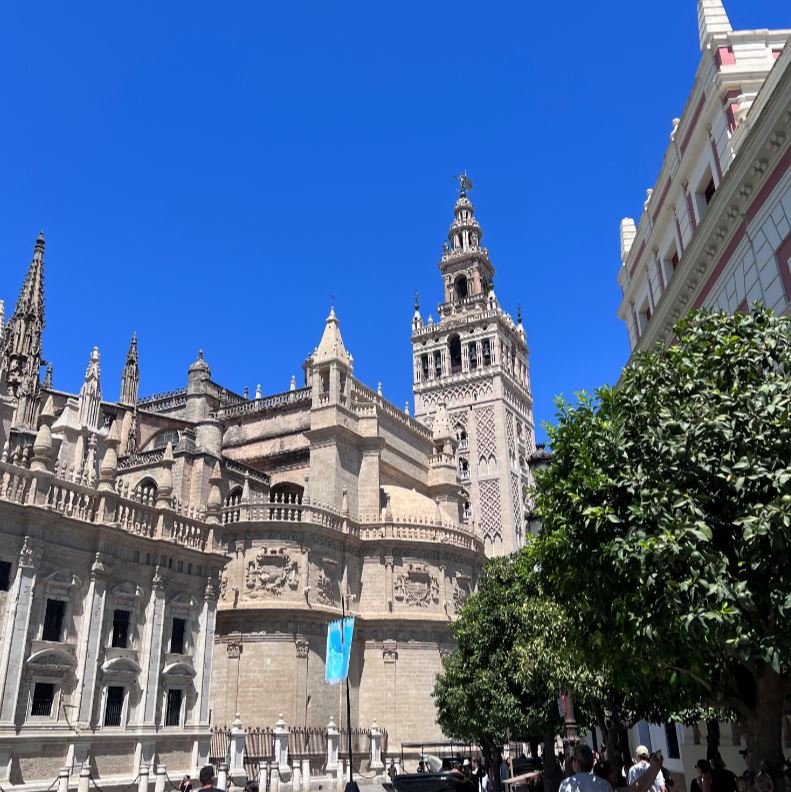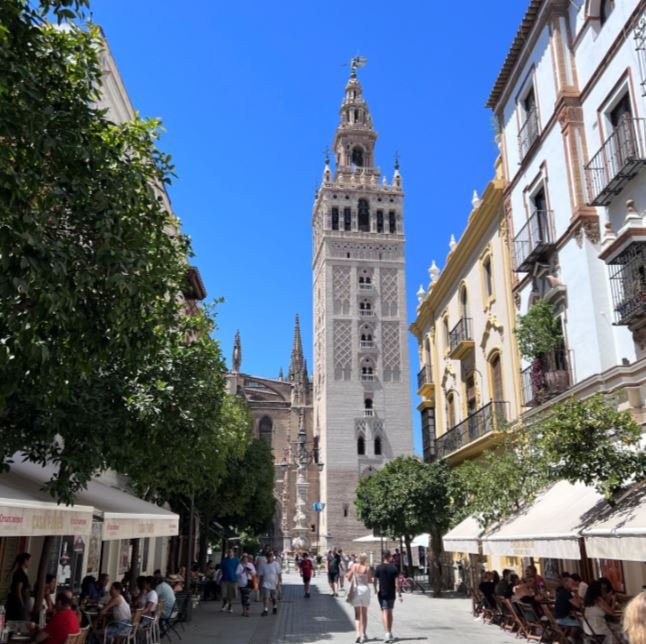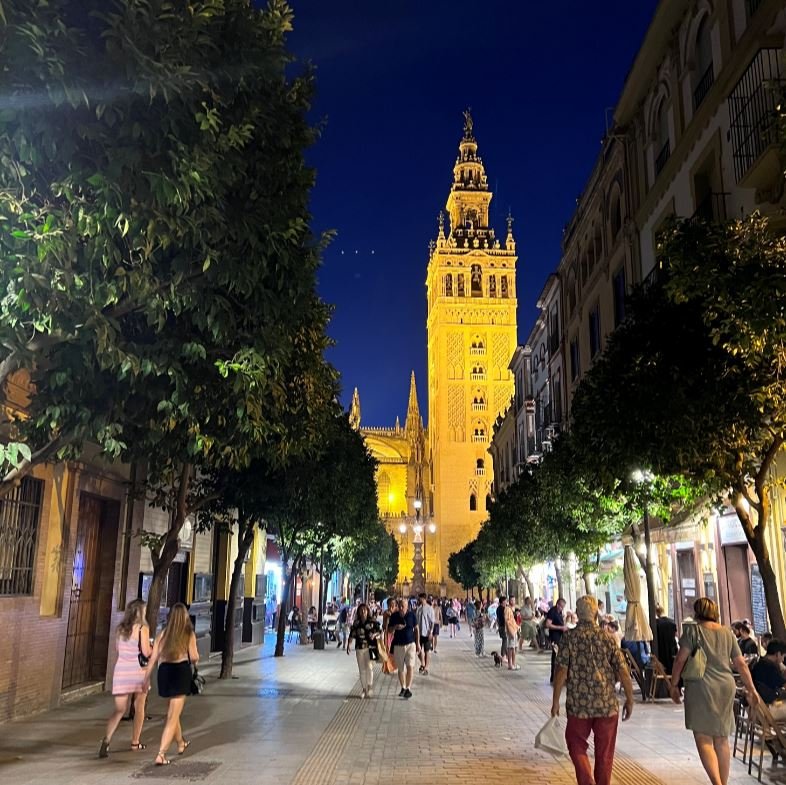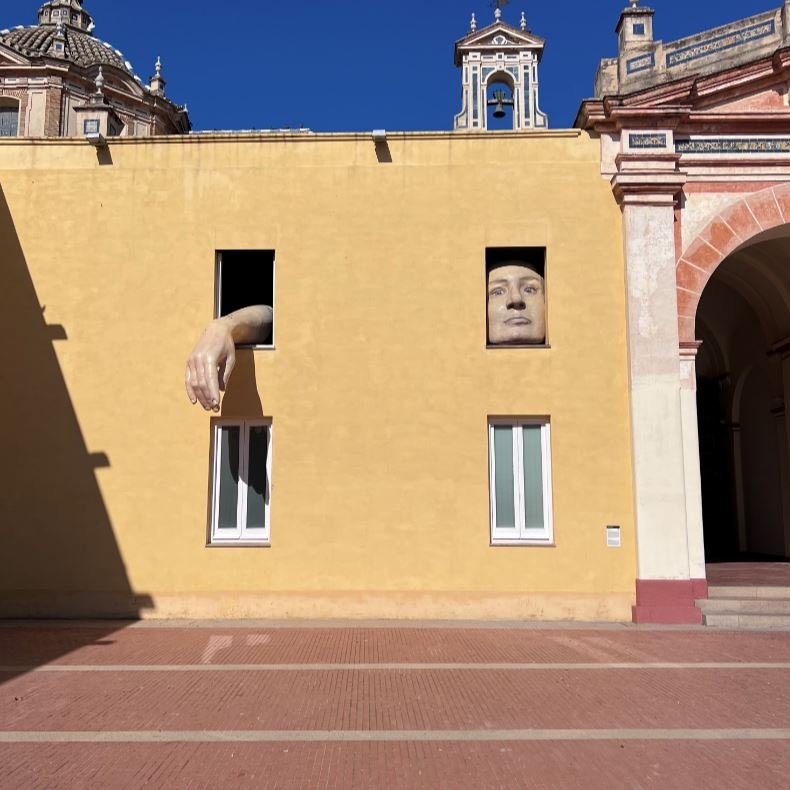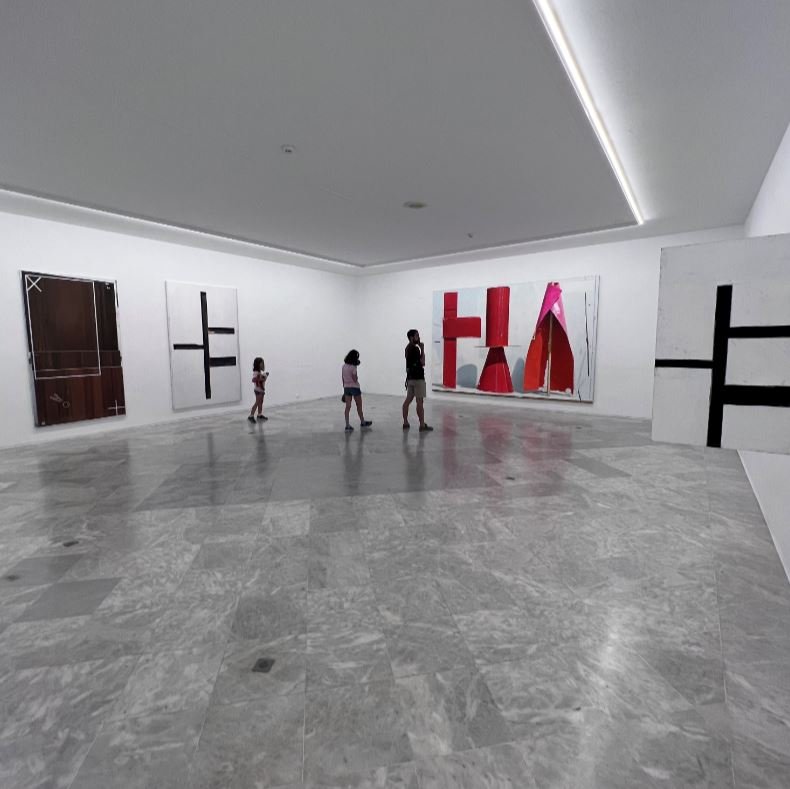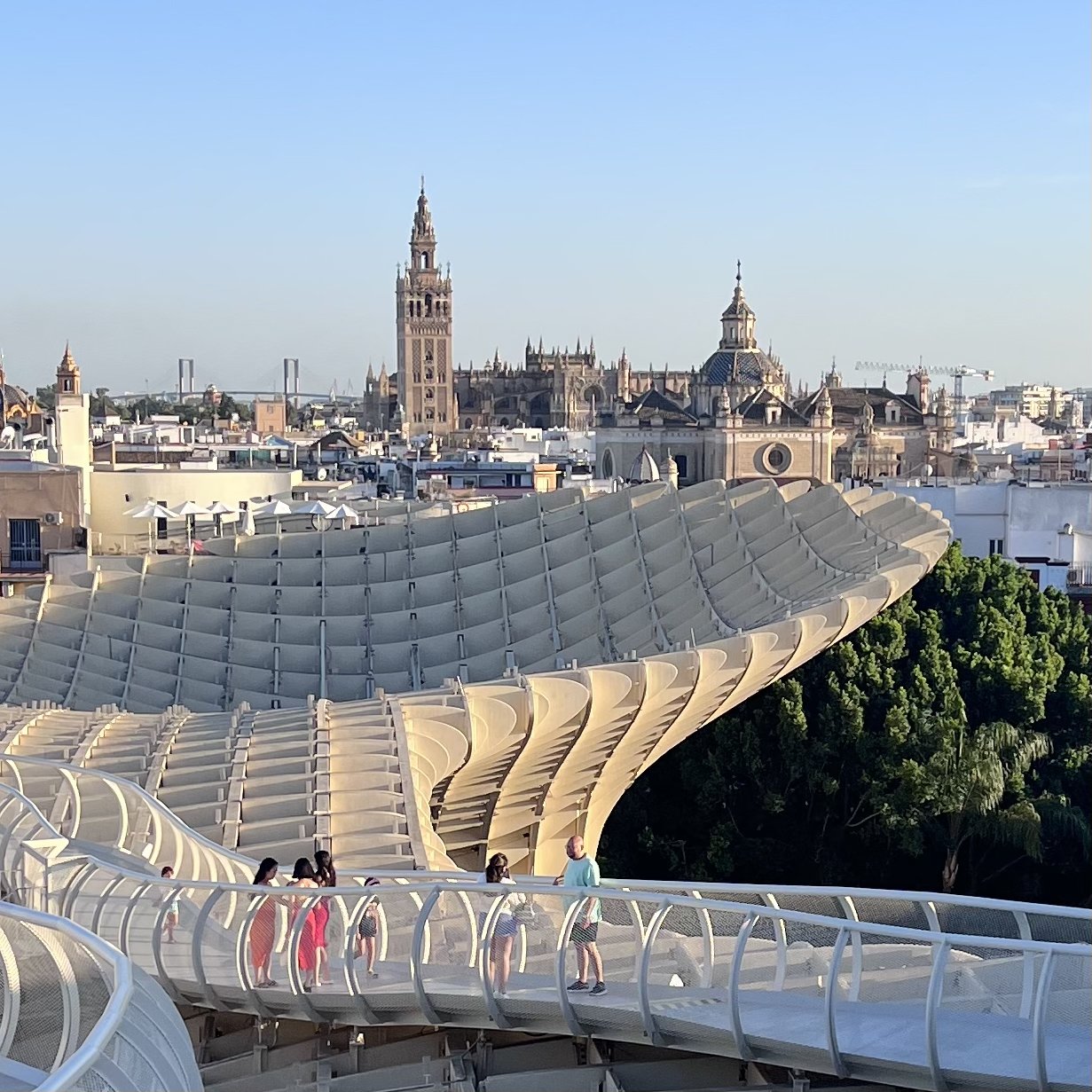Top 7 Best Things to See and Do in Seville, Spain (2024)
The City of Seville is Spain’s fourth largest city and the capital of Andalusia. It is one the most beautiful cities in Spain.
This is a beautiful city that offers so much to the visitor. Seville has Europe’s largest historic centre, with winding, narrow streets and alleyways that are a joy to explore and get lost in. The city is famed for its Mudéjar architecture, which is a blend of Moorish/Arabian and Gothic influences. Examples can be found at its world heritage sites such as Seville Cathedral and the Real Alcázar. Seville is also known for its tapas, and the tapas bar crawl is a key part of social life, creating a vibrant streetscene. Seville is also home to Flamenco and is one of the best places in Spain to see the traditional Spanish dance.
In this blog post I have set out the 7 best things to do in Seville, to help you plan your visit to this wonderful city.
Table of Contents
2. Wander around the Plaza de España and The Park of María Luisa
4. Eat and Drink in Barrio Santa Cruz
5. Stroll Around Barrio de Triana
7. Visit One Seville’s Art Galleries
1. Explore Seville’s Palaces
The Real Alcázar
The Real Alcázar de Sevilla (Royal Alcázar of Seville) is an absolutely stunning medieval palace. A trip to Seville would not be complete without a visit here.
The Real Alcázar is a thousand-year-old royal palace located in the heart of Seville, and is a registered UNESCO World Heritage Site. This palace was built on a Roman site that was later used as a Moorish Fortress. However, the construction of the current Real Alcázar began after the Christian conquest in the 14th century under the rule of Pedro 1 of Castille. The Spanish royal family still use the upper rooms as a personal residence today, making it the oldest occupied palace still in use.
The word Alcázar itself comes from the Arabic word ‘al qasr’ that means palace or castle, and the Moorish influence is still felt in its architecture and interior design, seamlessly fusing with traditional Spanish architecture. This fusion of architectural styles is known as Mudejar architecture. The Real Alcázar is perhaps the best example of the Mudejar architectural style in Spain.
Your journey through the Real Alcázar will take into a series of rooms and chambers. There are stunning architectural details on the walls and the ceiling in each room.
The Maidens Courtyard (patio de las doncellas) is surrounded by poly lobed arches, with decorative Moorish motifs. The bottom of the walls are covered in ceramics. This courtyard has been used widely in film and television, having been famously used in Games of Thrones to depict the residence of the House of Dorne.
The gardens at Real Alcázar are themselves vast and are characterised by tall palm trees and extensive foliage, with a maze at its centre. From here, you can also view the basement.
It is worth booking your ticket/s online beforehand to ensure that you can skip the queues.
Tickets cost €14.50 for general admission for adults, and €7 for children. Guided tours are also possible for a more in-depth understanding of the palace and its history.
During the Summer (April-September), The Real Alcázar is open between 9.30am and 7pm, Mondays to Sundays. Times will vary outside of these months.
Casa de Pilatos
CC Image courtesy of rey perezoso, Flickr
The Casa de Pilatos is an Andalusian palace located in Seville, Spain, is also known as the Palacio de los Adelantados Mayores de Andalucía.
The palace was built in the 16th century by order of Don Pedro Enriquez and later by his son Fadrique Enriques de Ribera. It is considered the prototype of the Andalusian palace.
The Casa de Pilatos has around 150 different 1530s azulejo designs made by the brothers Diego and Juan Pulido, one of the largest azulejo collections in the world. Nowadays, this palace is still partly inhabited and is the residence of the Dukes of Medinaceli.
The Casa de Pilatos is an Andalusian palace in Seville, Spain, which is an example of an Italian Renaissance building with Mudéjar elements and decorations. The palace is composed of romantic elements and is considered the best Andalusian noble building and is also an example of Sevillian architecture of the sixteenth century. The mélange of architectural styles in the Casa de Pilatos includes Gothic, Mudéjar, Renaissance, and Romantic. The main courtyard is designed in typically Mudejar style, with exquisite plaster-decorated arches, and elements of Gothic, Renaissance, and Romantic.
The gardens at Casa de Pilatos are famous for their magnificent patio and are considered to be among the finest in Seville. The gardens feature a traditional Italian style with two galleries or “loggias” with triple arcade set over columns and niches for busts. There is a central pond and paths edged by hedges. The Small Garden, known as “Pretorio”, is divided into four areas with different levels and is home to a large rectangular pond. The gardens are equally beautiful and lush.
Palacio de las Dueñas
The Palacio de las Dueñas is a 15th-century palace in Seville, Spain, currently belonging to the House of Alba.
It was built in the late 15th century in the Renaissance style with Gothic and Moorish influences. The palace is a majestic construction filled with works of art.
It was the favorite home of one of Spain's most famous aristocrats, the late Duchess de Alba, who died in 2014. The palace is a major historic home of great architectural and artistic heritage in the city. Visitors can admire the Neoclassical arch leading to the front garden and the seventeenth-century tile depicting the shield of the Duchy of Alba above the main entrance, made by Triana of Seville.
The Palacio de las Dueñas is open to the public for visits. The opening hours are from 10:00 AM to 3:15 PM on Mondays and from 10:00 AM to 5:15 PM from Tuesday to Sunday.
2. Wander around the Plaza de España and The Park of María Luisa
The Plaza de Espana was built in 1928 for the Ibero-American Exposition of 1929 and is one of the most beautiful and iconic sights of Seville. The Plaza de España is located next to The Park of María Luisa, therefore both should be experienced and explored together. There is lots to see and do here, but equally this is a great part of Seville to simply sit and relax.
Plaza de España
The Plaza de España is open throughout the day and is free to the public. The Plaza de España is a fantastic place to stroll through, have a romantic boat ride, or take a horse-drawn carriage ride through the square and adjoining park.
The Plaza de España is framed by a large semi-circular building, with two tall towers that stand at each end of the Plaza. These towers can be seen from all over Seville.
There is a covered walkway that runs along the length of the curved building, offering welcome shade from the sun in summer months. It is along this walkway that you will find traditional flamenco dancers and small market stalls.
At the base of the building are a series of tiled alcoves. Each alcove represents a different province in Spain. The alcoves contain bookcases. People sometimes donate and leave books in these bookcases to share with others.
The Plaza de España also has a moat winding through the plaza – it is possible to hire a small boat to row along the moat.
Four bridges cross over the moat, and lead towards the beautiful building that frames the Plaza de España. These bridges have a Venetian style and are meant to represent the four ancient kingdoms of Spain.
The Plaza de España has been frequently used in film and television, having famously been used in ‘Lawrence of Arabia’ and ‘Star Wars: Attack of the Clones’.
While entrance to the Plaza de España is free, payment is required for the optional rowboats or the horse and carriage rides.
It is worth being aware that the toilets at Plaza de España are not well sign-posted. To find them, face the main building, before you enter the actual plaza; they are in a grey metal block in the centre. There is a small charge.
Maria Luisa Park
The Maria Luisa Park (Parque de María Luisa) is a beautiful garden located at the edge of The Plaza de España, that is a lovely place to relax. The park is extensively landscaped with palm trees, orange trees, and other Mediterranean plants, which provide shade from the summer sun.
One of the great features of Maria Luisa Park is the surprises it conjures up as you walk around. Throughout the park there are a series of hidden features, such as tiled benches, fountains, ponds, pavilions, and even a waterfall. You can even take a relaxing horse and carriage ride around the park.
Plaza de América
On the opposite side of The Park of María Luisa from the Plaza de España, you will find the Plaza de América. This plaza is surrounded by three palaces in different architectural styles that were all built for the Ibero-american Exhibition of 1929.
The Royal Pavilion was built in a Neo-gothic style;
The Museum of Popular Arts and Customs was built in a Moorish-rival style known as Neomudejar. This is a traditional museum dedicated to Andalusian heritage and includes collections of ceramics, clothing and craft activities.
The Archaeological Museum of Seville was built in a Neo-renaissance style. The Archaeological Museum of Seville contains the remains of the Roman and Hispanic Roman era, as well as, the treasure of El Carambolo, a gold hoarde that dates back 650 BC. Entrance is free for EU citizens and €1.5 for non-EU citizens.
3. Climb the Setas de Sevilla
About Setas de Sevilla
Setas de Sevilla (or Las Setas) is a giant modern structure located in the heart of the historic centre of Seville, at La Encarnación Square.
The structure was designed by the German architect Jürgen Mayer and was originally titled the Metropol Parasol. It has been known as Setas de Sevilla (or simply Las Setas) since it opened in 2011. This translates to ‘Mushrooms of Seville’ (or simply ‘The Mushrooms’), owing to the shape of the structure, which look like a series of interconnecting mushrooms. At 26 metres, Las Setas claims to be the largest wooden structure in the world.
It is possible to walk along the rooftop walkway that follows the contours of the structure of Las Setas. Along this walkway you will get excellent views of Seville’s skyline and major landmarks.
The best time to visit is in the evening, at sunset. At this time, Las Setas are lit up in a variety of vibrant colours.
Las Setas contains its own small cinema. The Immersive Night and Day Experiences include a cinematic show titled ‘Feeling Seville’ that visualises the key features of Andalusian culture and the sights of Seville in high-definition form.
Beneath Las Setas, there are spaces to sit in the shade created by the structure and areas that are used as a skate park. At the ground level, there is also La Encarnación Market, with a number of stalls selling local food. The plaza surrounding Las Setas contains numerous tapas bars and shops.
The Antiquarium
It is also worth considering visiting The Antiquarium, which is located at the base of the structure. The Antiquarium is an archaeological museum that showcases the Roman and Moorish ruins found when Las Setas was constructed.
How to find the Entrance to Las Setas
The entrance to Las Setas can be difficult to find. It is at the ground level alongside the Antiquarium.
Further Information about Las Setas
Las Setas experiences are available daily from 9:30 a.m. to 12:00 a.m. You should allow for about 45 minutes for your visit unless you book one of the shows, then allow for just over an hour.
To give an idea of prices, tickets cost €10 during the daytime and €12 at sunset for the immersive experience or €5 during the daytime and €8 at sunset for just the lookout. There are a variety of options available, such as concessions and family tickets, so prices may vary depending on your personal circumstances.
4. Eat and Drink in Barrio Santa Cruz
Barrio Santa Cruz is an historic neighbourhood in Seville, formerly the Jewish area in Medieval times. This neighbourhood is located very close to the Real Alcázar and Seville Cathedral.
Barrio Santa Cruz neighbourhood is characterised by its narrow, cobbled streets, tall whitewashed buildings, with the occasional plaza. They combine to create a lovely shady area, providing a break from the sun in summer time. It is a lovely area to wander around.
Barrio Santa Cruz is full of restaurants and bars and is a great place to try the local tapas. Here, you will find the streets filled with people sitting out and enjoying the local cuisine. This area is great at lunch time and comes to life later in the evening. It is worth noting that the restaurants and bars are closed during the afternoon and only begin to open again around 7pm onwards.
Some recommended restaurants to try include:
El Librero Tapas which is located on Pasaje de Andreu. This restaurant has a beautiful interior and serves great tapas, gazpacho and espinacas con garbanzos (spinach with chickpeas).
La Cueva is located in the corner of the charming Plaza de Dona Maria. This restaurant offers traditional Andalusian food, with a large selection of fish and meat dishes.
Barrio Santa Cruz is a great location to see a flamenco show and dancing. La Casa del Flamenco is located in the heart of the Barrio de Santa Cruz and puts on shows every night in the main courtyard of an old palace.
From Barrio Santa Cruz, you will be able to see The Torre del Oro, is a dodecagonal 13th century military watchtower It was erected by the Almohad Caliphate in order to control access to Seville via the Guadalquivir river. The tower has been used as a fortress, a chapel, a warehouse, a prison, and even as the Naval Museum of Seville. The Torre del Oro is easily reached by foot from Barrio Santa Cruz. The Torre del Oro is open to visitors and is now home to the Naval Museum[1]. It is open from Monday to Sunday from 9:30 AM to 6:45 PM. Visitors can discover the history of the tower, facts, and how to get there.
5. Stroll Around Barrio de Triana
Barrio de Triana is a beautiful and laid-back neighbourhood, with its own identity, located across the Guadalquivir River from the centre of Seville. Triana is easily reached from central Seville via the Isabel II Bridge.
It does not have any major tourist attractions as such, but is a great place to wander around, taking in the ambience or stopping to relax with a drink. It is a particularly good spot to enjoy the sunset or an evening walk along the river.
Calle Betis is Triana’s most iconic street, with its narrow fronted and colourful houses overlooking the Guadalquivir River. There are plenty of bars and restaurants, serving traditional Andalusian food. This is a good road to undertake a tapas bar crawl.
Mercado de Triana (Triana Market), which is located in the Plaza del Altozano, near Isabel II Bridge, is a major draw to the area. There is a lot to explore in this market, including a wide range of fruit and vegetable stalls, authentic cured meats and cheeses, freshly caught fish and local crafts and ceramics. It is also another great place to enjoy tapas !!
Triana Market is actually located above the remains of the Castle of San Jorge, and there is a small museum located next to the market displaying the remains of the castle.
6. Visit Seville Cathedral
Cathedral of Seville, a UNESCO World Heritage Site, is the 4th largest church building in the world and the largest Gothic cathedral. This cathedral is truly vast.
Seville Cathedral is easy to find, being located next to the Real Alcázar and along the Avenida de la Constitucion. It costs around €12 for adults to enter the cathedral, whilst children under 13-years-old go free.
A brief history of Seville Cathedral
Seville Cathedral was built as a vanity project of the city’s leaders at the time to display the wealth of the city to visitors. The cathedral was built on the site of the Almohad mosque; construction began in the 1400s and was completed in 1506.
The design of the cathedral reflects the Moorish influence in Seville. Key features include:
The arches and columns inside the building were inspired by Islamic mosques.
The exterior of the cathedral is covered in green tiles.
The interior is decorated with gold and marble, with white stone walls, stained glass windows and vast ceilings.
Climbing Seville Cathedral’s Bell Tower
La Giralda (The Giralda) is Seville Cathedrals’ bell tower. This magnificent tower is an important landmark in Seville, standing at 104m in height. You can climb up to the bell chamber for stunning views across Seville.
This tower originally formed part of the Almohad mosque that stood at this location before the construction of Seville Cathedral, although it has been modified since with the introduction of the belfry.
Visit the Tomb of Christopher Columbus
Christopher Columbus is perhaps the most famous historical explorer to have ever lived, having led the expeditions that were the first known European contact with what would become the Americas.
Christopher Columbus’ final resting place is in Seville Cathedral. He was initially buried in the Dominican Republic until 1795, when he was transferred to Seville.
How long should you spend at Seville Cathedral?
It takes about 1 to 2 hours to explore Seville Cathedral, especially if you want to climb the Giralda tower to experience the city views from the top.
7. Visit one of Seville’s Art Galleries
Intertwined amongst the historic streets and buildings of Seville, the city has a number of interesting contemporary art galleries that are worth exploring. I have listed the main ones to see:
El Centro Andaluz de Arte Contemporáneo (CAAC)
El Centro Andaluz de Arte Contemporáneo (CAAC) (The Andalusian Centre for Contemporary Art), is located in the old and picturesque setting of a 15th-century monastery, that was also once used as a ceramics factory in the 19th century. The contrast between the historic backdrop with the 20th and 21st contemporary art collection is fascinating and makes for an interesting exploration of the artwork on display.
The Andalusian Centre for Contemporary Art sits among the vast grounds of the old monastery that is very pleasant to walk around.
It is located in the Isla de la Cartuja neighbourhood at Monasterio de la Cartuja de Santa María de Las Cuevas, Avda. Américo Vespucio. I would recommend getting a taxi to reach this gallery as it is a short way out from the city centre, although bus routes C-1, C-2 and 5 do also serve it.
Admission is free for EU Members and just €1.50 for everyone else. Children go free.
Museo de Bellas Artes
The Museo de Bellas Artes is located in the Plaza del Museo, in the place of the former Convento de la Merced Calzada.
The museum is filled with works of art from the Middle Ages, Renaissance, Baroque era, and up to the 20th century. The buildings and patio gardens are also equally impressive.
The entrance fee for the Museo de Bellas Artes in Seville is €1.50.
Galería Weber-Lutgen
Galería Weber-Lutgen displays the artworks of lesser-known contemporary artists that specialise in multi-media, graphics and digital prints.
This gallery is located at C/ Fray Diego de Cádiz, 9. 41003, Seville and is generally open Tuesdays to Fridays in the evening from 5.30pm to 8.30pm, with some earlier times on other days of the week. It is worth checking current opening times before your visit.
Galería Haurie
Galería Haurie is conveniently located near Seville Cathedral at Guzmán el Bueno Street, nº 9, Seville. This gallery exhibits a wide variety of artworks from realism and traditional to abstract and surrealism.
Galería Haurie is open Monday to Friday from 11am to 2pm and 6pm to 9pm. It is also open on Saturdays from 11am to 2pm.
Galería Rafael Ortiz
Galería Rafael Ortiz is located near the Flamenco Museum of Seville along Calle de Los Mármoles. This gallery focuses on young and emerging artists from Seville.
The gallery is open Monday to Friday from 10am to 1.30pm and 6pm to 9pm. It is also open Saturday from 10am to 1.30pm.
Galería Birimbao
Galería Birimbao is conveniently located near the Setas de Sevilla and exhibits contemporary art from Sevillian and some international artists. The art explores a variety of mediums from photography and print to painting and sculpture.
This gallery is open Monday from 6pm to 9pm and Tuesday to Friday from 11am to 1.30pm and 6pm to 9pm. It is also open on Saturday from 11am to 1.30pm.
Delimbo Artspace
Delimbo Artspace is also conveniently located near the Setas de Sevilla. This gallery features contemporary art, graphic design and urban art, such as street art and post-graffiti. There is often a link between the city and the art.
This gallery is open Wednesday to Saturday between 11am and 2pm.
11 Day Trips From Seville
Seville is a fantastic base for exploring the beautiful region of Andalusia in southern Spain. Here are some popular day trips you can take from Seville:
Cordoba: Visit the famous Mosque-Cathedral (Mezquita), a UNESCO World Heritage site, and explore the charming Jewish Quarter (Judería).
Granada: Discover the stunning Alhambra palace complex, including the Generalife gardens, and wander through the historic Albaicín neighborhood.
Ronda: Experience breathtaking views of the dramatic El Tajo gorge, visit the Puente Nuevo bridge, and explore the old town's winding streets.
Cadiz: Explore the historic port city with its beautiful beaches, ancient fortifications, and charming old town.
Jerez de la Frontera: Known for its sherry production, Jerez offers opportunities to visit wineries, enjoy flamenco shows, and see the Royal Andalusian School of Equestrian Art.
Gibraltar: Discover the British Overseas Territory and its iconic Rock of Gibraltar. Visit the Upper Rock Nature Reserve, St. Michael's Cave, and enjoy stunning views of the Mediterranean and Africa. More about Gibraltar here.
Doñana National Park: Take a guided tour of this vast natural reserve, home to diverse wildlife, including rare bird species, and enjoy its unspoiled landscapes.
Carmona: Discover this picturesque town known for its Roman ruins, medieval architecture, and panoramic views from its fortress.
Italica: Visit the ancient Roman city of Italica, where you can explore well-preserved ruins, including a grand amphitheater.
Sierra de Aracena and Picos de Aroche Natural Park: Enjoy hiking trails, visit charming villages, and taste delicious local products such as cured ham in this scenic mountainous region.
El Rocío: Experience the unique atmosphere of this pilgrimage village known for its annual religious festival and the marshlands of Doñana nearby.
What is the best time of year to visit Seville?
Seville has the nickname 'la sartén de España’, which means the frying pan of Spain. This is due to it’s location in a dip surrounded by the olive groves of La Campina. There is no sea-breeze, meaning it regularly records some of the hottest temperatures in Europe. This is something to keep in mind when planning your visit.
Seville is a beautiful city to visit at any time of the year, but during Spring would be recommended. Between March and May, it is a little cooler (20-26°C / 68-80°F) and less busy than at the height of the summer months. In July and August temperatures are likely to be between 30-40°C / 86-104°F. Late February / early March can be a lovely time to visit, temperatures are closer to 20°C / 68°F and the orange trees are in full bloom.
I have included some opening times and prices that are correct at the time of writing this blog post, but please check the latest information before your visit.
Some interesting facts about Seville
Here are some interesting facts about Seville:
1. Seville was founded as the Roman city of Hispalis.
2. Seville is approximately 2,200 years old.
3. Seville was an important city during the Islamic reign from the 8th century to the 15th century.
4. Seville became the center of the independent Taifa of Seville following the collapse of the Caliphate of Córdoba in the early 11th century.
5. Seville has three UNESCO World Heritage Sites in its old town historic district: the Cathedral, the General Archive of the Indies, and the Alcázar palace complex.
6. Seville is Spain's fourth-largest city and one of the most-loved cities in Southern Europe.
7. Seville is known for its hot temperatures in the summer, with daily maximums routinely above 35 °C (95 °F) in July and August.
8. Seville quickly became designated as the Puerto de las Indias or Port of the Indies after Christopher Columbus's journey to the New World.
9. Seville has a distinct personality and a large and well-preserved historical centre.
10. Seville has some beautiful examples of Murillo and Zurbaran works, as well as one work of El Greco, at the Museo De Bellas Artes De Sevilla.
I hope you have found this blog post useful. If you have visited Seville, I would love to hear your thoughts or if you feel anything is missing from the list, please email me and let me know at [email protected].


